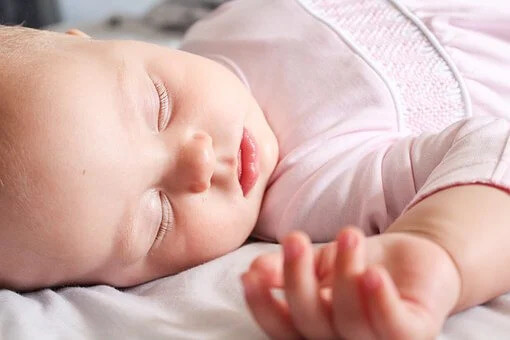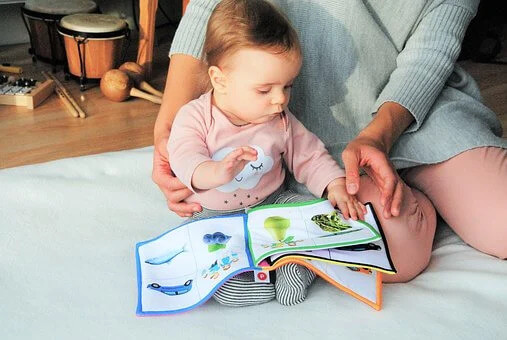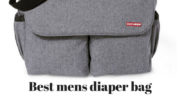Why does my baby pull her hair? I hear this so many times from my friends and family members. It seems like such a weird thing to do right? Well, any parent will tell you that babies do many weird things and you should not worry so much.
In this article we will cover everything there is about why babies pull their hair, and if it’s ok or not, and also, what to do about it.
Though it may surprise many parents, some babies commonly pull their own hair. In fact, the act of pulling hair by babies is so commonplace that it is claimed to be a habit affecting both boys and girls.
While it is reassuring to know that your baby is not the only one doing this, it is undeniably hard to watch the process.
Here we take a look at everyday situations in which a baby is likely to pull on their hair. We then offer some practical advice on how best to manage this habit.
When Does Hair Pulling Commonly Start in Babies?
Experts have noticed that hair pulling tends to begin as a habit from around the six-month mark of a baby’ s life. It then very often continues well into their first year. Though it does indeed affect both boys and girls, hair pulling is more commonly noted in girls.
This data links to adults and hair-pulling habits. A high proportion of adults who pull hair tend to have developed the habit during childhood or adolescence. Though both men and women are included here, hair pulling is once again, a more frequent habit seen in women.

The Most Common Reasons Why Babies Pull or Twirl Their Hair
By watching for certain signs and cues, it is possible to determine why a baby may pull their hair as a form of coping mechanism. The most common situations here include:
Your Baby is Tired
Similar to sucking their thumb, a baby may twirl or pull at their hair when they are tired. This is often thought to be a visual clue that they are winding down. This could be used as a means of self-soothing when they find themselves unable to keep their eyes open.
Your Baby is Cranky
As well as a visual clue for tiredness, pulling hair can also indicate a level of crankiness in your baby! Those babies that are becoming fussy often reach for their hair.
This is once again a way of them calming themselves down. Pulling hair or twirling it in these circumstances is often one of the most common ways for babies to soothe themselves.
Your Baby is Teething
Some parents note that their baby tends to pull at their hair when they are teething. This is usually highlighted, especially by pulling at the hair that is behind or around their ears. This is often due to a baby trying to alleviate the pain they are experiencing in their gums or jaw area.
Your Baby is Nursing
Some parents who breastfeed their baby may notice them gently pulling their hair during a feed. This is usually shown by softly tugging at the hair on their back or sides of their head. This once again is a comforting mechanism.
Your Baby is Playing
As well as displaying signs of discomfort, there are a few babies who occasionally pull at their hair when they are playing! This can include those who have just discovered that they have hair on their head. This pulling act here is usually their way of making themselves familiar with its new textures and sensation.

How Do I Manage a Baby Who is Pulling Their Hair?
Though hair pulling or twirling in most babies is not usually a cause for concern, there may well be times when you need to intervene. This can include when your baby is noticeably pulling out their hair and developing bald spots.
Related: Why won’t my baby take a pacifier | When to stop swaddling
It is also a good idea to work on managing this habit if you find them becoming addicted to pulling their hair rather than holding onto other things.
In such circumstances as these, there are several methods you can attempt here, including:
- Distract your baby with something else they can hold in their hands. This can be anything like a favorite toy or even a soothing blanket. Make sure that it is safe and baby proof. This method assures that you do not pay the hair-pulling too much attention. Instead, you divert their attention elsewhere each time you see it happening.
- Comfort your baby by offering them a gentle, soothing cuddle. This may work better for those babies that are a little fractious and pulling their hair as a coping mechanism. Quite often, a soothing cuddle from a parent can do wonders in distracting them, while offering one of the best natural remedies for pain in the meantime. It is also a lovely bonding experience most effective if you find their hair pulling is due to tiredness.
- Consider offering your baby a toy, such as a doll or stuffed animal that has long hair. This will encourage them to pull or twirl somebody else’s hair rather than their own! Make sure that the toy is age-appropriate beforehand, though.
- Try implementing a game each time your baby reaches for their hair. This can be anything simple like itsy-bitsy spider to patty cake. The idea here is all about hand and eye coordination. Thus, if they are more inclined to use their hands for the motions, they are less likely to keep reaching for their hair straightaway.
- Look at massaging the exact spot on your baby’s head that they had been reaching for. As you do this, encourage their hands and arms to rest by their side by nudging them into a more relaxed position.
- Offer a teething toy for them to use. This is especially ideal if your baby is reaching for their hair while teething. A cold teething toy will provide a good distraction for their hands. It will also be more effective at eliminating the pain temporarily as they chew down on it.
Final Thoughts on Hair Pulling in Babies
For many parents, being able to understand and spot your baby’s hair-pulling habits allows you to quickly remedy this common activity.
It is worth remembering, though, that many babies and children will pull at their hair. For most, this is a normal process and not usually something worth worrying about. Most children will, in fact, grow out of it without you even realizing it.
Yet, by implementing these distraction techniques and directing your baby’s attention elsewhere, it is possible to prevent this habit from becoming more frequent or leading to potential bald spots in the future.





